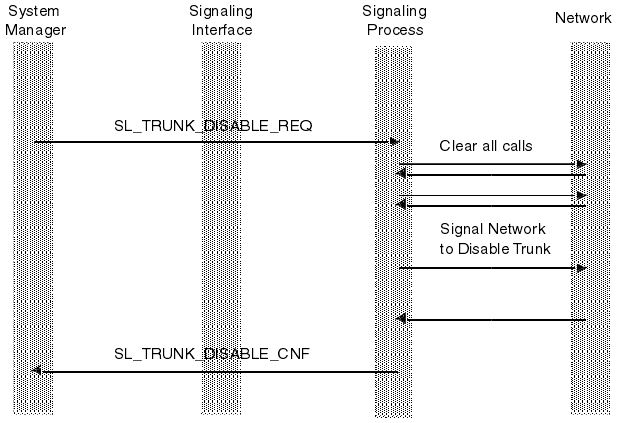This section describes the sequence of events involved in disabling a trunk
Figure 1 shows the following events:
Figure 1. Disabling a trunk


- Somebody requested a trunk to be disabled, for example, by using the Blueworx Voice Response System Monitor window (or via SNMP).
- The Blueworx Voice Response system manager sends an SL_TRUNK_DISABLE_REQ primitive to the signaling process.
- The signaling process clears any active calls on the trunk.
- The signaling process disables the trunk.
- The signaling process then sends an SL_TRUNK_DISABLE_CNF primitive to Blueworx Voice Response.
- The trunk is now disabled.